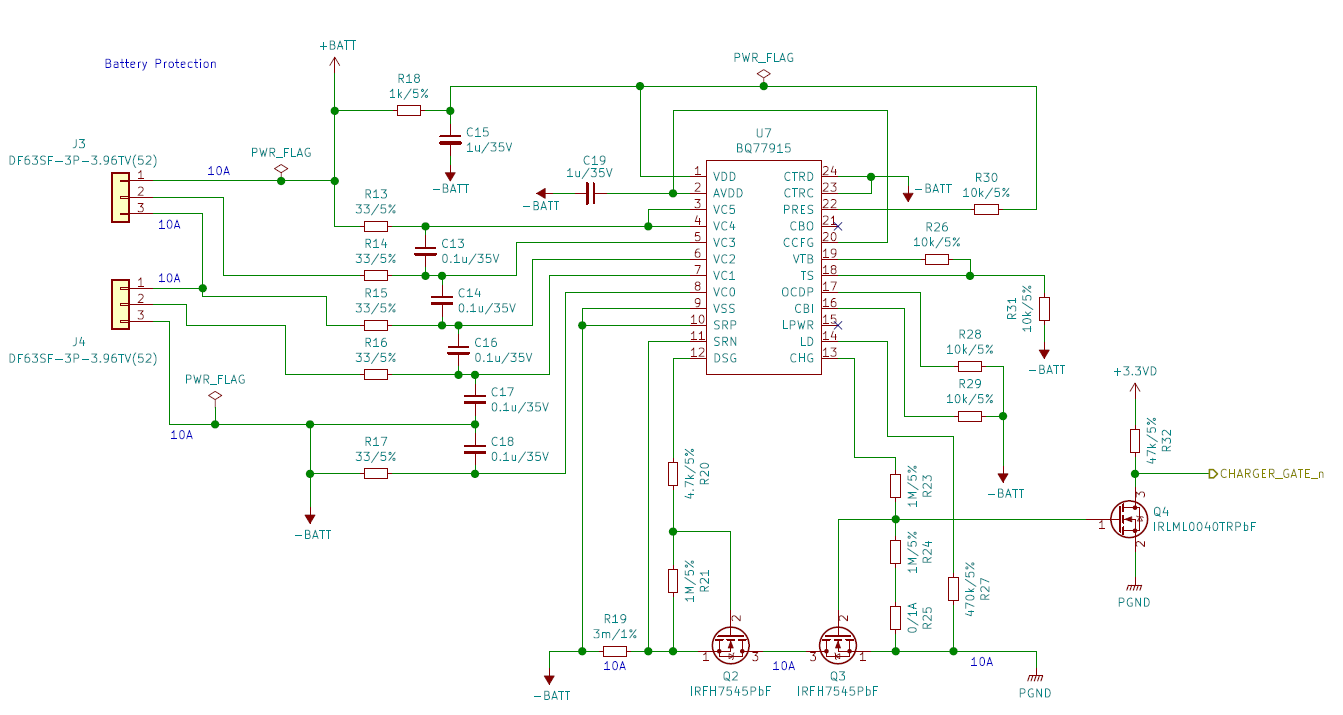Other Parts Discussed in Thread: TEST2
I designed 4cells BMS with BQ77915 and tested. I'd like to know how CHG pin of BQ77915 works when new battery is connected.
Test1) Connect fully charged battery (SOC 95%, 16.6V(4.15V/cell))
-> CHG pin is low. When starting to discharge, CHG pin is high. After stopping to discharge, CHG pin is low.
Test2) Connect NOT fully charged battery (SOC 50%, 15.5V(3.875V/cell))
-> CHG pin is high. When starting to discharge, CHG pin is high. After stopping to discharge, CHG pin keeps high.
Test3) After Test2, Charge the battery (with BMS)
-> CHG pin keeps high. When starting to discharge, CHG pin is high. After stopping to discharge, CHG pin is high. The battery voltage is about 16.6V. (4.15V/cell)
I think the results of Test2 and 3 are normal, but I could not understand why the BMS works as Test 1.
Fully charged battery should not connect ? If connected, the battery should be discharged ? Or is there something wrong in this circuit ?


